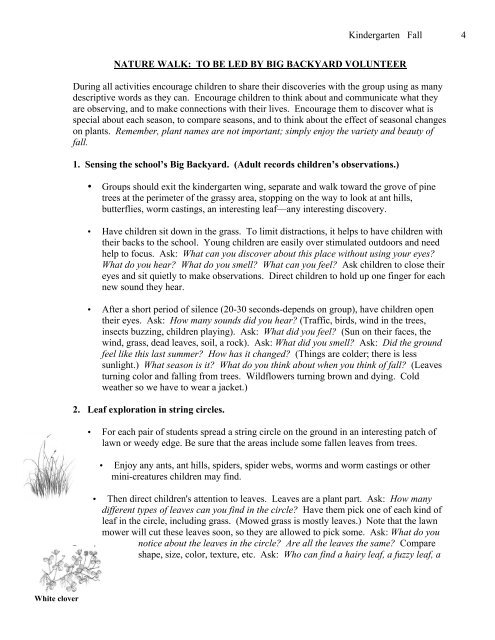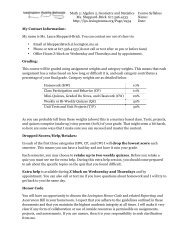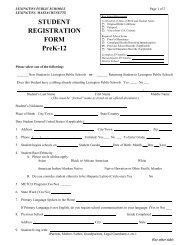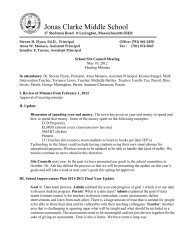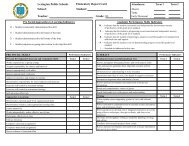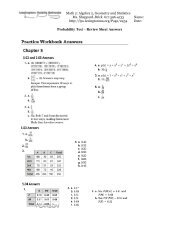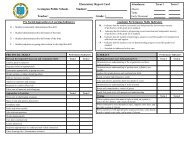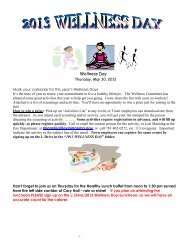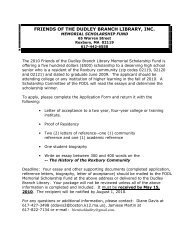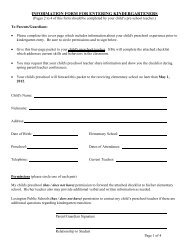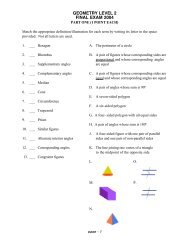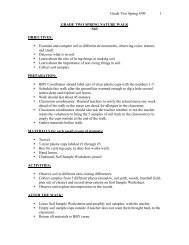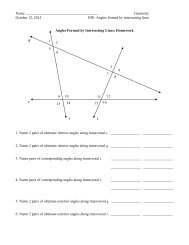Fall Big Backyard Walk - Lexington Public Schools
Fall Big Backyard Walk - Lexington Public Schools
Fall Big Backyard Walk - Lexington Public Schools
You also want an ePaper? Increase the reach of your titles
YUMPU automatically turns print PDFs into web optimized ePapers that Google loves.
White clover<br />
Kindergarten <strong>Fall</strong><br />
NATURE WALK: TO BE LED BY BIG BACKYARD VOLUNTEER<br />
During all activities encourage children to share their discoveries with the group using as many<br />
descriptive words as they can. Encourage children to think about and communicate what they<br />
are observing, and to make connections with their lives. Encourage them to discover what is<br />
special about each season, to compare seasons, and to think about the effect of seasonal changes<br />
on plants. Remember, plant names are not important; simply enjoy the variety and beauty of<br />
fall.<br />
1. Sensing the school’s <strong>Big</strong> <strong>Backyard</strong>. (Adult records children’s observations.)<br />
• Groups should exit the kindergarten wing, separate and walk toward the grove of pine<br />
trees at the perimeter of the grassy area, stopping on the way to look at ant hills,<br />
butterflies, worm castings, an interesting leaf—any interesting discovery.<br />
• Have children sit down in the grass. To limit distractions, it helps to have children with<br />
their backs to the school. Young children are easily over stimulated outdoors and need<br />
help to focus. Ask: What can you discover about this place without using your eyes?<br />
What do you hear? What do you smell? What can you feel? Ask children to close their<br />
eyes and sit quietly to make observations. Direct children to hold up one finger for each<br />
new sound they hear.<br />
• After a short period of silence (20-30 seconds-depends on group), have children open<br />
their eyes. Ask: How many sounds did you hear? (Traffic, birds, wind in the trees,<br />
insects buzzing, children playing). Ask: What did you feel? (Sun on their faces, the<br />
wind, grass, dead leaves, soil, a rock). Ask: What did you smell? Ask: Did the ground<br />
feel like this last summer? How has it changed? (Things are colder; there is less<br />
sunlight.) What season is it? What do you think about when you think of fall? (Leaves<br />
turning color and falling from trees. Wildflowers turning brown and dying. Cold<br />
weather so we have to wear a jacket.)<br />
2. Leaf exploration in string circles.<br />
• For each pair of students spread a string circle on the ground in an interesting patch of<br />
lawn or weedy edge. Be sure that the areas include some fallen leaves from trees.<br />
• Enjoy any ants, ant hills, spiders, spider webs, worms and worm castings or other<br />
mini-creatures children may find.<br />
• Then direct children's attention to leaves. Leaves are a plant part. Ask: How many<br />
different types of leaves can you find in the circle? Have them pick one of each kind of<br />
leaf in the circle, including grass. (Mowed grass is mostly leaves.) Note that the lawn<br />
mower will cut these leaves soon, so they are allowed to pick some. Ask: What do you<br />
notice about the leaves in the circle? Are all the leaves the same? Compare<br />
shape, size, color, texture, etc. Ask: Who can find a hairy leaf, a fuzzy leaf, a<br />
4


